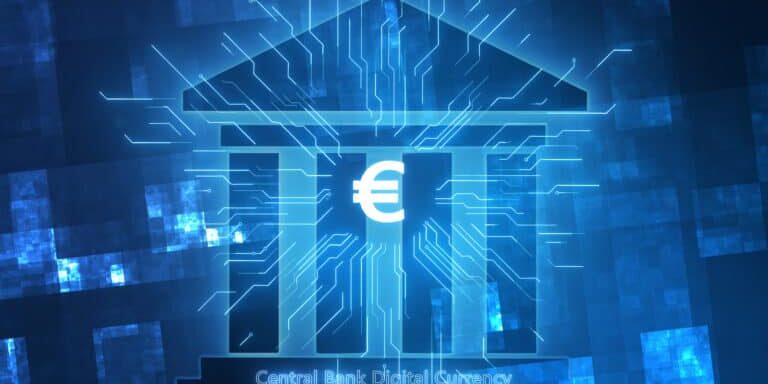
The Digital Euro's Assault on Privacy
The Central Bank of Spain has issued a note to Spanish citizens preparing them for the potential introduction of a digital euro and explaining the basics of how the European Union’s central bank digital currency (CBDC) would operate.
According to the Banco de España, physical currency “does not allow [them] to exploit all the advantages offered by the increasing digitization of the economy and society,” which has prompted the Eurosystem “to analyze the possibility of issuing a digital euro as a complement to cash.”
The authors noted that banknotes and coins “underpin citizens’ confidence in the monetary system,” and said a digital euro would “guarantee access to money issued by the central bank in the digital environment.”
They added that it would help preserve the basic characteristics of cash, and will help “maintain confidence in the currency in the new environment.”
“The infrastructure that allows us to make electronic payments (machines, connections, protocols ...) is a key part of our financial system and the Eurosystem ensures its soundness and availability,” they said. “The digital euro would be based on a public and European infrastructure that would strengthen the European financial system and make it more independent of foreign alternatives.”
Addressing concerns related to how a lack of internet service could impact services, the central bank said the system will enable users “to make payments in digital euros without the need for an internet connection,” though online services will also be available. “The offline mode offers a backup solution for network failures and would allow digital payments to be included in geographic areas where they are not currently an option.”
Offline operations also allow for a level of privacy similar to that of cash, “since only users could see their payment information,” the report said. For online transactions, “the experience would be equivalent to what we have today with electronic payments: users would access the digital euro through financial institutions and only these would have visibility on their personal information. The Eurosystem would process the payments, but without knowing who is behind each transaction.”
“The digital euro, in short, would be a widely accepted means of payment throughout the eurozone, like banknotes and coins, and would offer basic services (account opening, free and easy to use fund loading, payments, etc.),” they said.
The report noted that October 18 marked the launch of the preparation phase of the digital euro project, which is intended to help prepare countries “to be in a position to issue a digital euro if deemed necessary. The decision to issue it, however, has not yet been made,” they said.
“These preparations are multiple and complex in nature, not only for the Eurosystem but also for legislators,” they said. “The objective is clear: to be able to complement the range of payment solutions available to citizens, including cash. The digital euro would be an additional option that would ensure access to public money with all its guarantees, also in an increasingly digital environment.”
This move by Banco de España follows similar efforts by banks and governments across the Eurozone to get citizens prepared for the potential introduction of a digital euro.
On Oct. 18, the European Central Bank (ECB) announced the beginning of the preparation phase for the digital euro project.
During the preparation phase, which will start on November 1 and extend for two years, the ECB will work on “finalizing the digital euro rulebook and selecting providers that could develop a digital euro platform and infrastructure,” they said. “It will also include testing and experimentation to develop a digital euro that meets both the Eurosystem’s requirements and user needs, for example in terms of user experience, privacy, financial inclusion, and environmental footprint.”
On Oct. 25, the ECB shared a link to the landing page dedicated to basic information about the digital euro. “As more and more people choose to pay digitally, we want to offer a digital form of central bank money with the same guaranteed value as cash,” they said. “That’s what a digital euro would be.”
The landing page outlines several benefits of the digital euro, saying it promises to deliver an easier life and a “more robust” Europe.
“A digital euro would make our lives easier by giving us the choice to pay with a secure means of payment universally accepted throughout the euro area. Like cash, paying with digital euro would be free of charge for everyone in the euro area,” they said. “It would support Europe’s strategic autonomy and monetary sovereignty, making our payments landscape more competitive and resilient to non-European payment providers.”
Tuomas Välimäki, a board member for the Bank of Finland, recently called the digital euro “the most topical project” in the European payment sector. “The possible introduction of a digital euro would give consumers the option of paying with central bank money wherever electronic payment is accepted,” he said.
Originally published by Jordan Finneseth at Kitco











